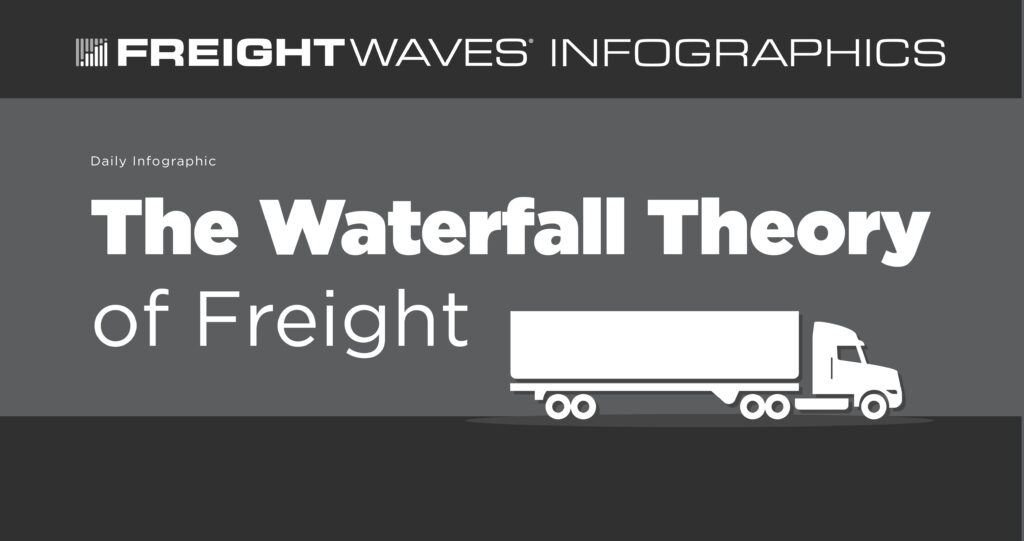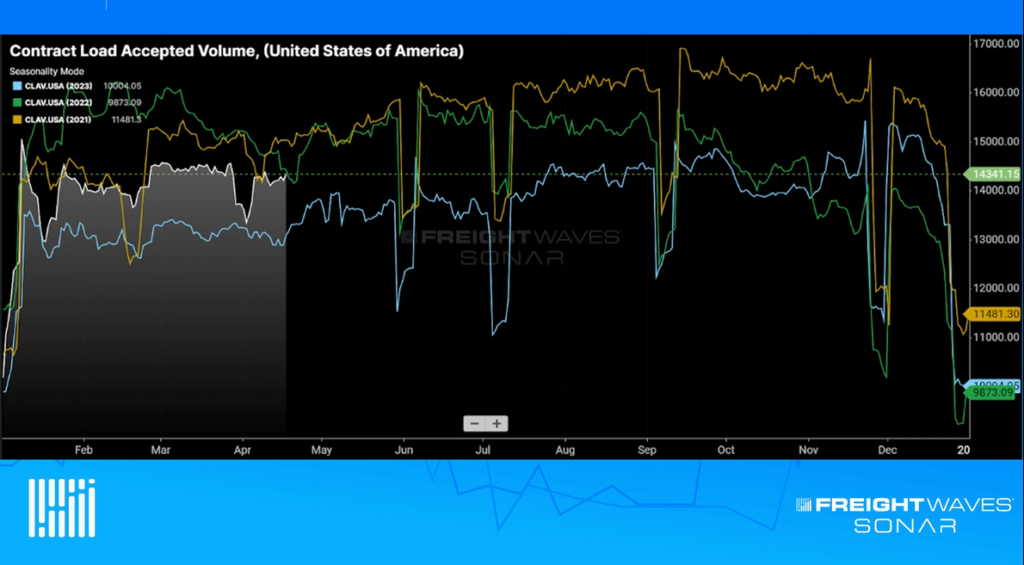One of the most important tasks for freight forecasters is forecasting transportation rates, which are localized. That means that rates in Los Angeles are different from rates in Chicago or Dallas or any market large or small.
The two primary types of transportation rates are contract rates and spot rates, which exist in each market. Spot rates are determined by current freight demand and trucking supply in any given market. Therefore, they can be highly volatile and difficult to forecast for an extended period of time. Therefore, freight forecasters need the most current freight market conditions to build spot rate forecasts.
When building a freight rate analysis for the trucking spot market it is essential to include the following freight data points in your model.
Freight volumes
Using outbound and inbound freight volumes to determine headhaul and backhaul lanes is vitally important in order to analyze and forecast spot rates. When inbound freight volumes are greater than outbound freight volumes then this is a backhaul market. When outbound volume exceeds inbound volume, then this is a headhaul market.
In backhaul markets, rates tend to be higher since it is more difficult to find freight moving out of these markets. The opposite is true for headhaul markets, where rates are typically lower going into these markets since carriers have confidence that they will be able to easily find freight to haul out of these markets.
An easy and quick way to find out if a market is currently a headhaul or backhaul market in FreightWaves SONAR is to use the HAUL index. This index takes outbound tender volumes (OTVI) and subtracts inbound tender volumes (ITVI) to determine the headhaul level. If the HAUL number is positive then it is a headhaul market. If the HAUL number is negative then it is a backhaul market. As freight dynamics change, certain markets will flip between headhaul and backhaul markets while others are mostly one or the other.
Truck capacity
The Outbound Tender Rejection Index (OTRI) and Inbound Tender Rejection Index (ITRI) are crucial to determining trucking capacity for spot rate forecasts. Tender rejects are the most important indicator for capacity in any one of the 135 markets in SONAR.
When forecasting trucking spot rates, it is important to analyze the trend of outbound tender rejects. If outbound tender rejects are rising in a certain market, then it indicates that capacity is tightening and spot rates are likely rising. Conversely, if outbound tender rejects are trending lower, spot rates are likely falling.
You should analyze inbound tender rejects in the same way you would outbound tender rejects. Inbound rejects will rise when there is a reason that drivers do not want to enter a certain market. These reasons can range from extreme weather events to an inability to find freight to haul out of the market.
Analyzing historic spot rates
Lastly, it is important to analyze historical spot rates to forecast the likely high and low boundaries of spot rates. As the saying goes, “History doesn’t repeat itself but it often rhymes,” and it is no different in the freight world.
When analyzing historical spot rates using Truckstop.com rates in SONAR, it becomes apparent that spot rates often get to the same levels, at which point capacity then enters or exits the market and pushes rates lower or higher.
Historical price analyses should not be done blindly but are instead best paired with analyses of capacity and demand indicators. The best indicator for higher or lower spot rates will be when all or most of the individual indicators line up to back your thesis.
If you are interested in tracking the freight market, including contract and spot rates, FreightWaves SONAR offers over 150,000 indices, most of which are updated daily. The world’s fastest, most accurate freight data includes trucking spot rate indices, tender indices, and market balance indices. SONAR freight tender indices are created based on actual electronic load requests from shippers to carriers, meaning you know that the index is measuring an actual load transaction.
SONAR offers proprietary data that comes from actual load tenders, electronic logging devices and transportation management systems, along with dozens of third-party global freight and logistics-related index providers like TCA Benchmarking, Freightos, ACT, Drewry and DTN.
SONAR offers the fastest freight market data in the world, across all major modes of traffic. The SONAR platform is the only freight forecasting and analytics platform that offers real-time freight market intelligence driven off actual freight contract tenders. Find out more about FreightWaves SONAR.












